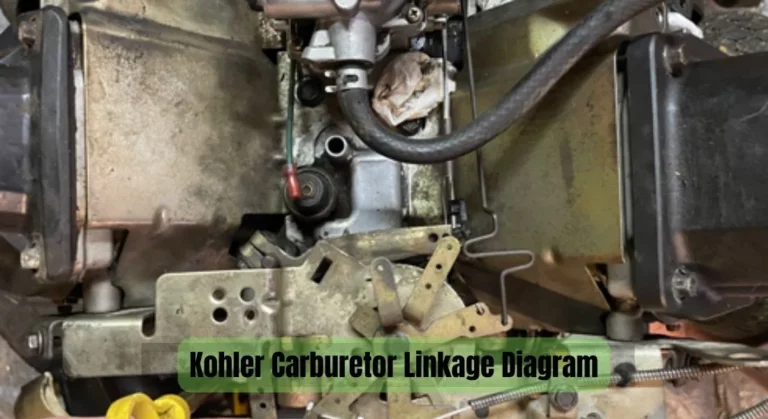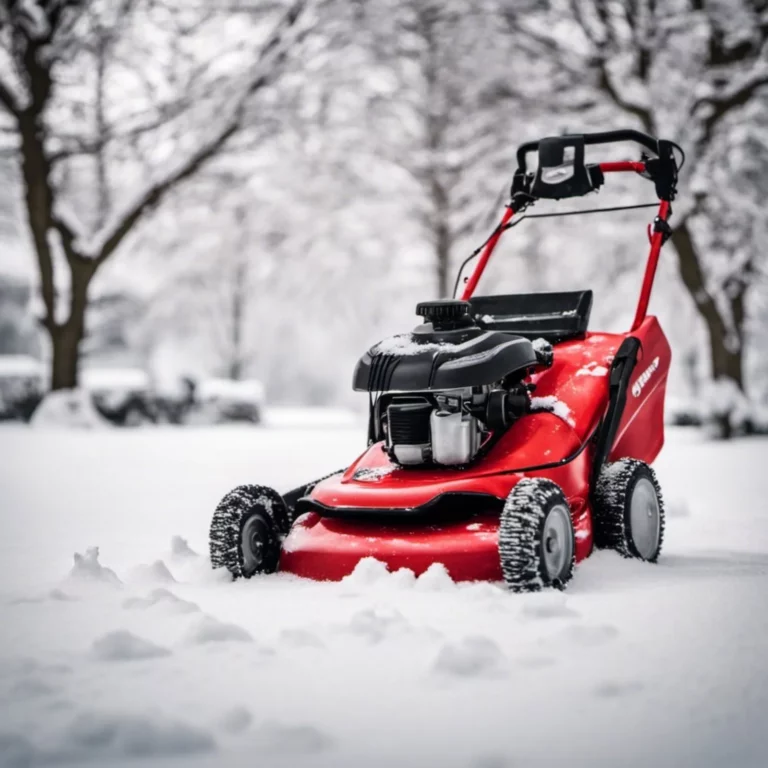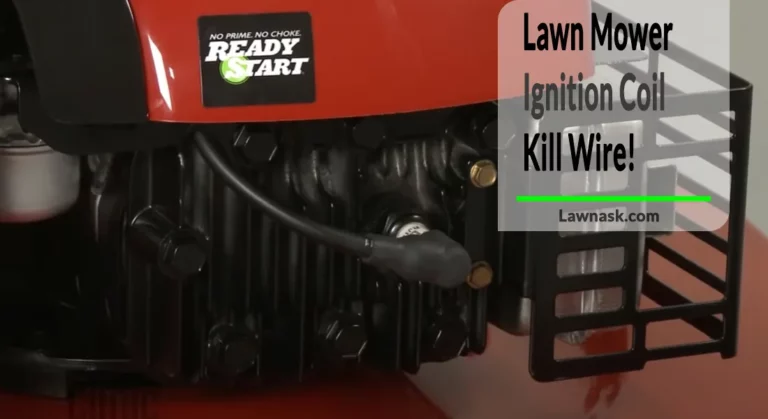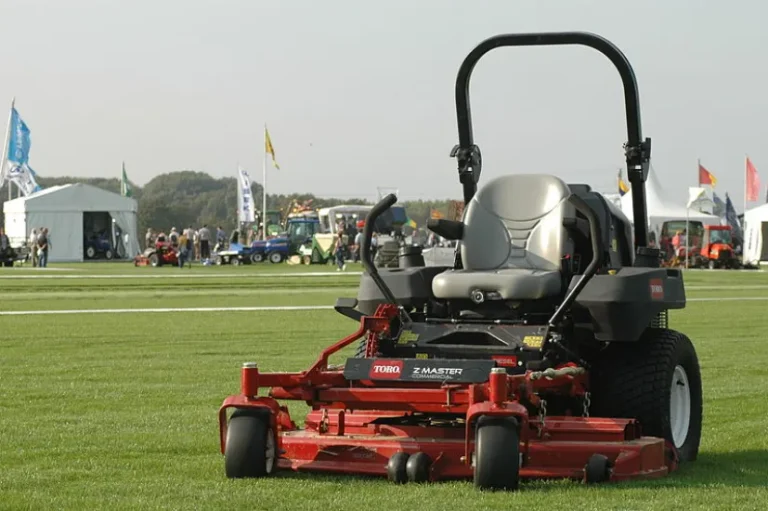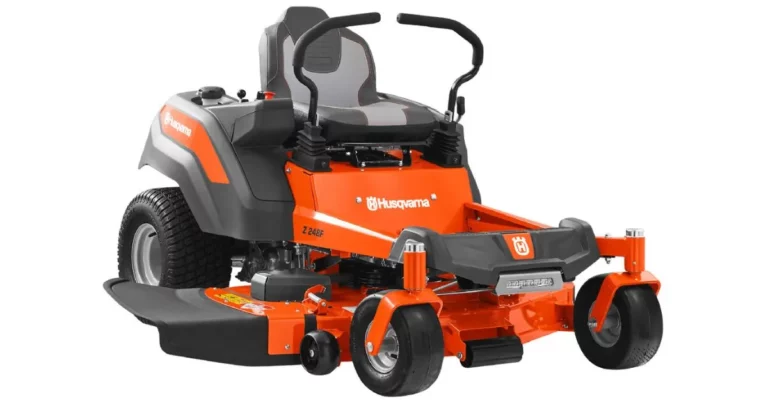All About Lawn Mower RPM – How to Tune it Perfectly?
How a lawn mower works is pretty basic knowledge for every homeowner. But did you know that the speed at which the blades rotate can determine the performance of the lawn mower?
RPM or revolution per minute is the rotation speed of the blades. Understanding how different speeds affect the lawn mower’s rpm and cutting abilities is essential for appropriate lawn keeping.
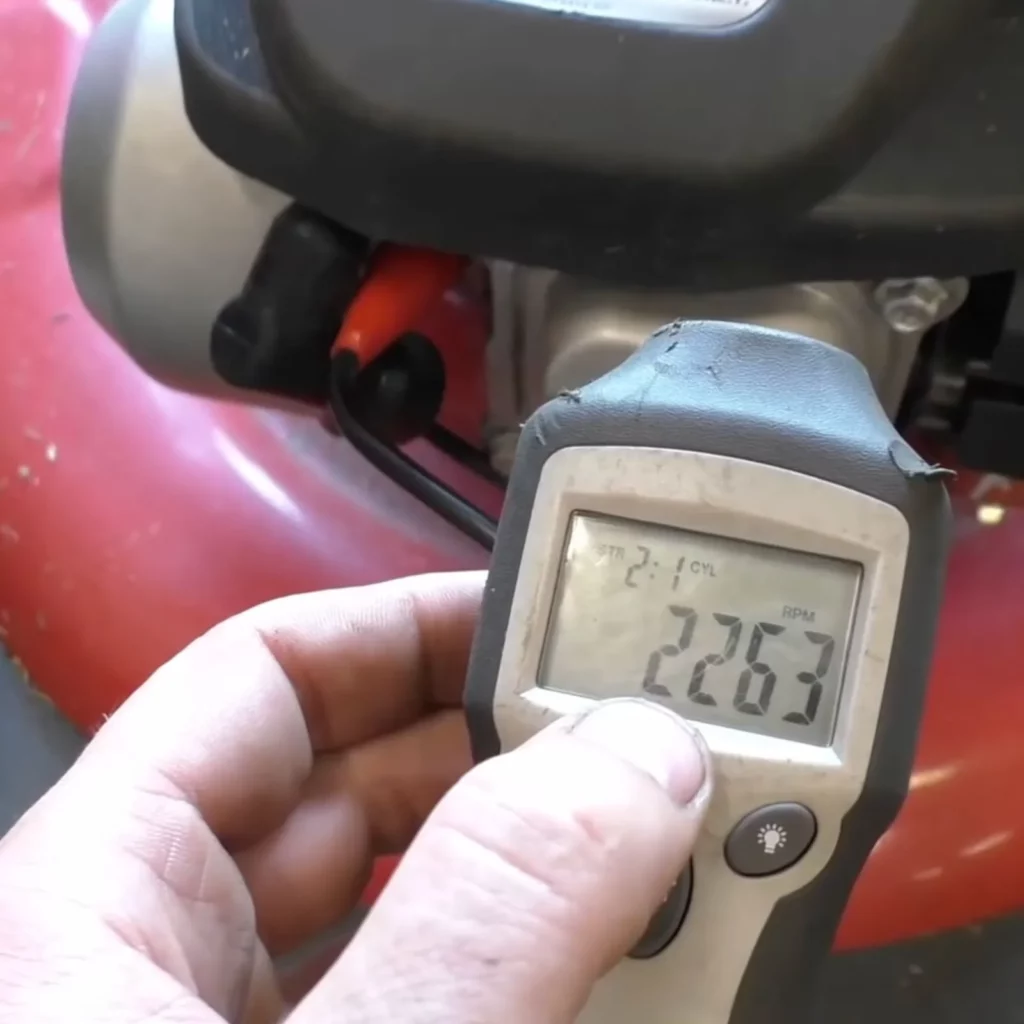
Understanding RPM in Lawn Mowers
Let’s take a deeper dive into what we know as RPM. It is a measure of how fast engine components such as the blades of the lawn mower rotate.
Idle RPM in Lawn Mowers
The idle RPM is an important factor to consider. It typically falls within a range of 1200 to 2000 RPM. As an example, the Briggs and Stratton lawnmowers have an idle speed of 1750. (see more)
It determines the stability of the engine when resting. If it is set too low, it will stall the engine frequently, start rough, and even damage the engine on long-term use.
On the other hand, if the idle RPM is set too high, the engine will generate excess heat. It also becomes a fire hazard at that point.
With the blades continuously spinning at max speed it will also burn more fuel. So it is essential to maintain a manageable idle RPM.
How to Adjust The RPM Speed on a Lawn Mower
The RPM speed on a lawn mower depends on how tight or loose the governor spring is.
The methods vary depending on the governor arm settings and whether your mower comes with a lever to adjust RPM.
Governor Arm Extension
On some models, you need to hold the governor’s arm and pull the extension to tighten or loosen the spring.
Pulling the extension outwards tightens the spring and increases the RPM speed and vice versa. If you are still unclear watch this video for better understanding.
Adjusting via The Lever
Newer models of lawnmowers come with a lever that controls the governor spring. Remove the air filter to get access to the lever and the spring.
Turn the lever clockwise to increase the RPM and counter-clockwise to reduce it.
Watch this quick video to get a clear idea of what you need to do to change your lawnmower RPM speed.
Benefits of Adjusting Your Lawn Mower’s RPMs
Fine-tuning the engine and blade RPM can get you out of a lot of trouble. Be careful to always keep the RPM under a manageable range.
Let’s see what the benefits of adjusting your lawn mower RPM are:
Increased Efficiency
Running the engine at sorted RPMs will help the engine to run at optimal power. It also reduces fuel consumption and accomplishes the same amount of work with less effort.
It will save you a lot of money in fuel and maintenance.
Performance Improvements
Fine-tuning the RPM will lead to better performance overall. With optimal speeds, you can lower the chances of your lawn mower stalling.
The mower responds and cuts better. It will be more noticeable with self-propelled and riding mowers.
The thrust of air from the blade pushes the pieces of cut grass into the bag. At the right RPMs, it will increase the bagging capabilities of your lawn mower.
Vibration and Noise Reduction
When the engine operates smoothly it minimizes internal vibrations. The components rotate at an even speed and remove excess stress from the engine.
If the lawn mower RPM is set too high the engine makes a lot of noise. Adjusting it helps maintain proper airflow and minimize a lot of noise and your neighbors won’t be complaining as much.
Longer Engine Lifespan
Running the lawn mower at optimal RPMs will reduce the chances of component wear. As the engine produces less heat under lower RPM settings, it will prevent overheating and preserve the lubrication.
The air-fuel mixture will burn efficiently and you will see reduced carbon buildup inside the engine.
Enhanced User Experience and Safety
Excessive vibration from the mower causes discomfort over long-time use. Adjusting the RPM helps provide a smoother and more pleasant experience.
If you adjust the idle and operating RPM properly, you will be able to start and operate the mower effortlessly.
The idle RPM stops the blade from spinning and overloading the engine. It also reduces the risks of fire hazards from overheating.
Factors Affecting Your Lawn Mower’s RPM
Several factors affect the RPM configuration and capabilities of a lawn mower. Such as the type of engine or loads, blade tip speed, and other settings inside it.
Let’s explore these factors in detail:
Type of Engine
Two-stroke engines have a lightweight design and a narrower RPM range compared to a four-stroke engine. Load torque and effective load torque determine the RPM of an engine.
However, two-stroke engines run at higher RPMs. But most lawnmowers these days have a four-stroke engine with a range of 2800-3500 RPM due to regulations.
Blade Length and Tip Speed
Blade Tip speed directly relates to lawn mower RPM. As the blades get dull it makes a huge difference. The ideal blade tip speed varies from blade length and the design of the deck.
Most manufacturers advise a blade tip speed of 210 Miles per hour for blades up to 20 inches for the best experience.
The length of the blade also determines what RPM it needs to perform adequately. The longer the blade the less RPM it runs at and vice versa.
Heavy Grass Loads
The engine load is the resistance from the stuff that the mower is cutting. Dense or tall grass and rough terrain increase the load on the engine.
To compensate for the extra load and keep the mower cutting grass smoothly you’ll need to increase the RPM. For very light workloads reducing the RPM won’t affect performance that much.
Spark Plug Wires
Worn-out spark plug wires can disrupt the timing of the spark and affect ignition and RPM stability. It causes an uneven burn of fuel in the engine and fluctuates the RPMs.
Damaged wires cause cylinder misfires that lead to a reduction in engine power. That translates into bad performance and lower RPMs.
Air Filter and Carburetor Condition
The engine needs clean air for effective combustion. A clogged or dirty air filter restricts airflow and traps it inside the engine causing it to run lean. The result is lower power and irregular RPMs.
If the carburetor is unable to do a good mixture of fuel and air it can lead to fluctuations of RPMs and rapid firing noise in the engine.
Governor Arm and Linkage Settings
The Governor arm works with the throttle system to control the lawn mower RPM. The spring attached to the arm loses its tension over time. A worn-out spring will produce a low RPM.
The linkage settings determine the governor’s response to load changes and maintain the desired RPM. By adjusting it you can change the baseline RPM and control the sensitivity of the governor to these changes.
Frequently Asked Questions (FAQs)
What RPM does a push mower run?
The highest a push mower can run is usually around the 3000 RPM range to meet emissions standards set by C.A.R.B.
What is the RPM of a 4-stroke lawn mower?
A 4-stroke lawn mower runs between the range of 2800-3600 RPM.
How often should I adjust my Lawn mower’s RPM?
If your lawn mower is acting weird or making loud noise you probably need to check and adjust the RPM.
How do I measure my lawn mower’s RPM?
You can use a Tachometer to precisely measure your lawn mower’s RPM.
Does weather affect the lawn mower RPM?
Extremely hot weather warrants an RPM adjustment or the lawn mower will start to overheat.


